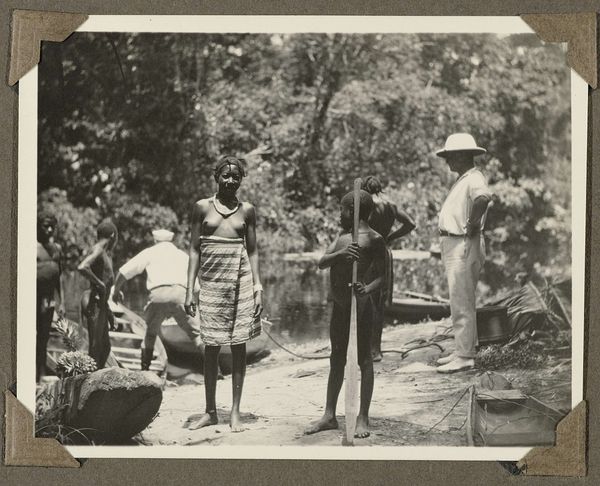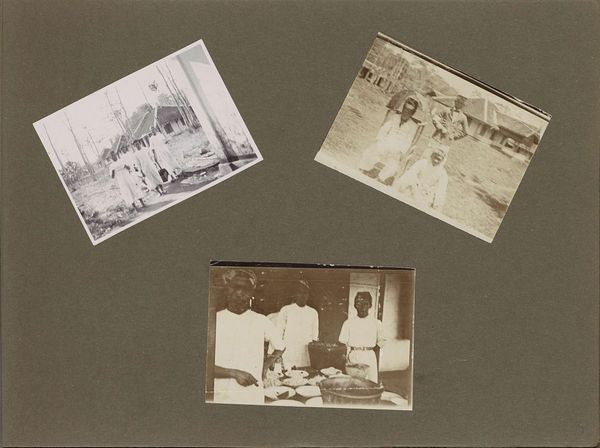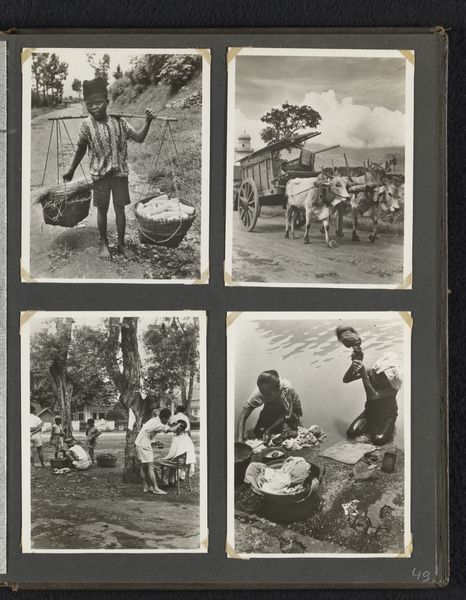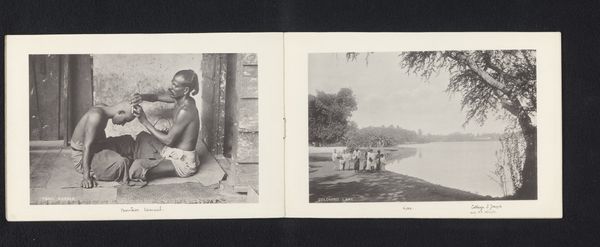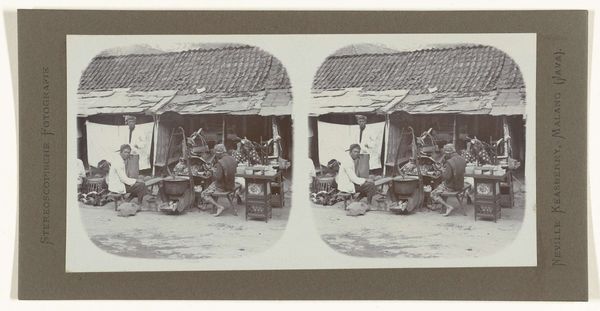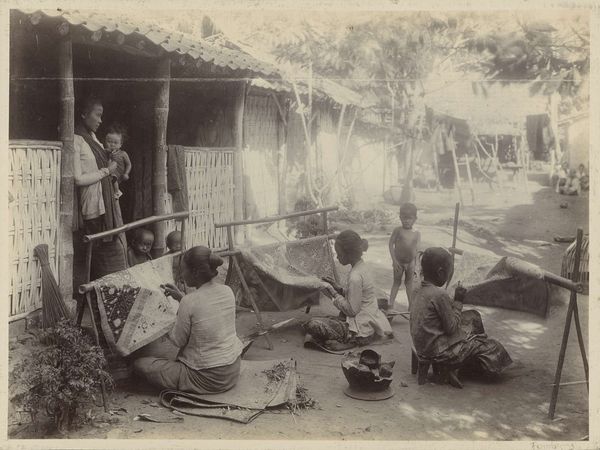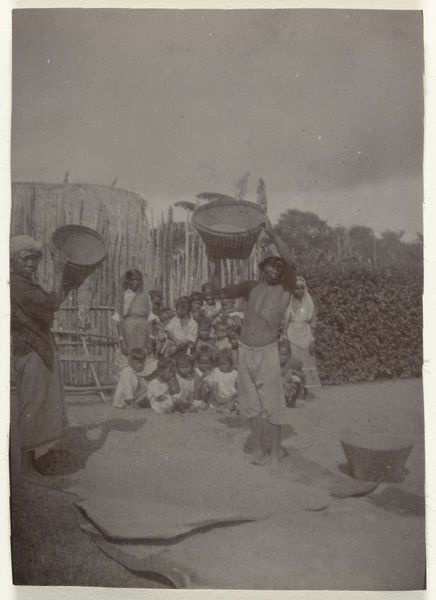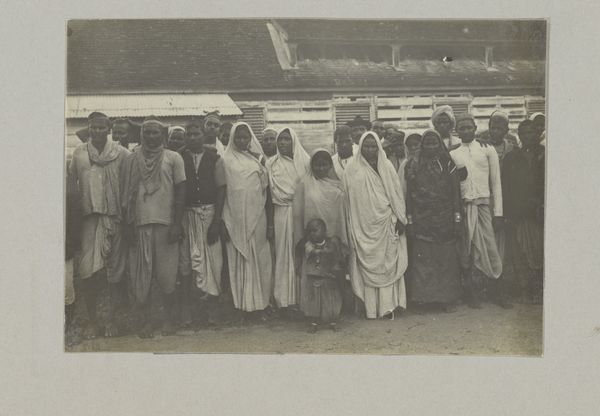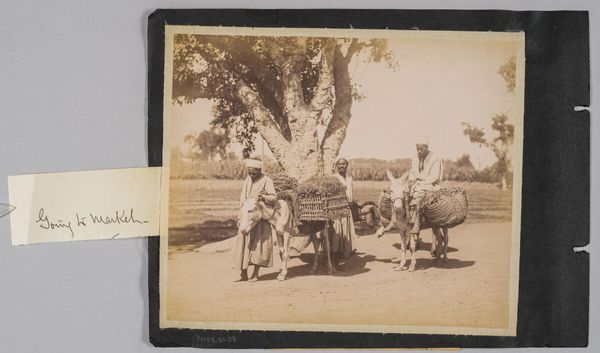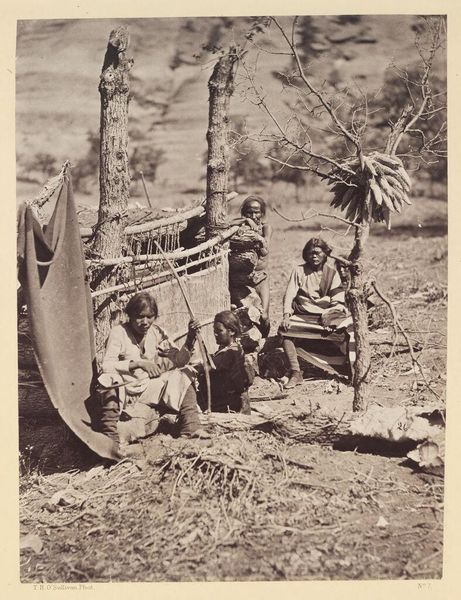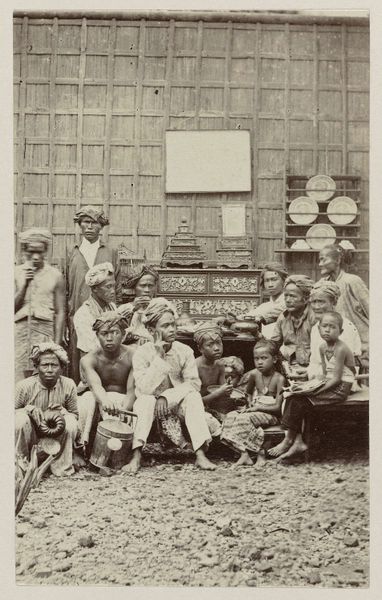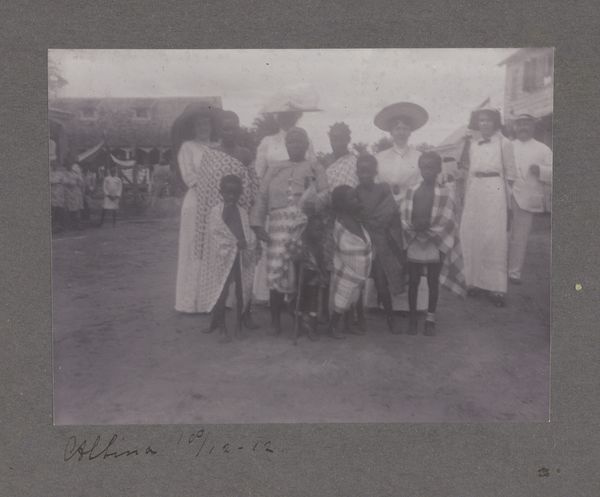
contact-print, photography
#
asian-art
#
landscape
#
contact-print
#
photography
#
genre-painting
#
realism
Dimensions: height 76 mm, width 152 mm
Copyright: Rijks Museum: Open Domain
Curator: Welcome, everyone. I’m delighted to introduce “Verkoop van vruchten en vis in gevlochten manden op een markt”, which roughly translates to “Sale of Fruits and Fish in Woven Baskets at a Market,” a contact-print photograph by Neville Keasberry, dating from between 1900 and 1935. It presents a vibrant scene in what appears to be a Javanese marketplace. Editor: My goodness, it's got a whole lotta stillness going on, doesn’t it? Like someone hit the pause button mid-chatter. The light, all grayed and subtle, kinda pulls the sound right out of it, you know? It looks so serene and a little otherworldly almost, despite the ordinary activity! Curator: Indeed, that quietude belies the potential activity suggested by the marketplace setting. Given its production date, this work provides critical insight into the colonial economies of Java. Consider the composition: note the framing that emphasizes the local vendors, presumably Javanese, and what might be the consumers from the European population in that region, signified by the European dresses and hats, if you look closer, to understand racial dynamics embedded within market practices. Editor: Right! Those baskets, piled high, give it such a down-to-earth feeling—makes you wanna haggle over prices and soak in all the little dramas of daily life. I’m really vibing with the dude on the bottom. I mean, is he watching us too, watching him, doing his accounting, I wonder? Curator: It really encapsulates daily interactions—a negotiation not just of goods but of power, tradition, and perhaps even identity. And while "realism" as a stylistic term might seem straightforward, its deployment here—the act of capturing this particular scene at this particular time—also tells a very specific story about who is documenting whom, and for what purposes. Editor: That's powerful stuff, right there. Just one little snapshot telling stories layered upon stories. It kind of makes you think about where all of *our* food comes from, and who's doing all the heavy lifting. Curator: Precisely! The work serves as a historical document—a lens through which we can examine issues of colonial economies, race, gender and social structure, offering a perspective to better comprehend historical political contexts. Editor: Yeah, thanks for nudging me out of my comfy zone, so interesting! This thing is deep. Like looking into another world. I can almost smell the spices. Curator: Exactly, isn't that what great art does? It connects us across time and space and asks us to reconsider the world around us, then and now.
Comments
No comments
Be the first to comment and join the conversation on the ultimate creative platform.
